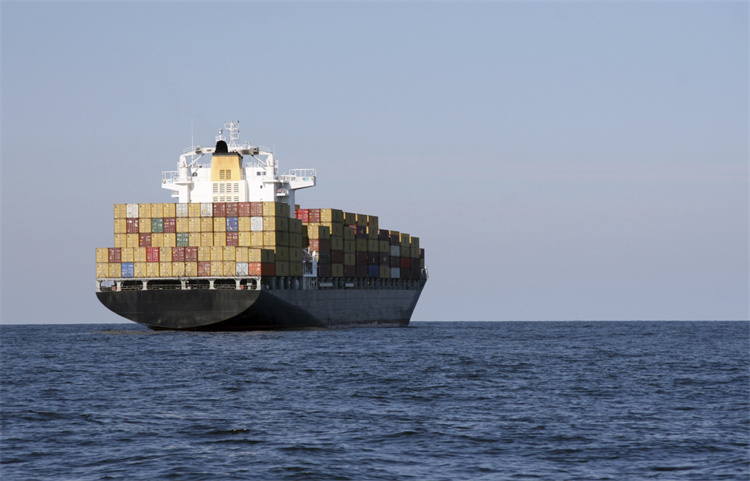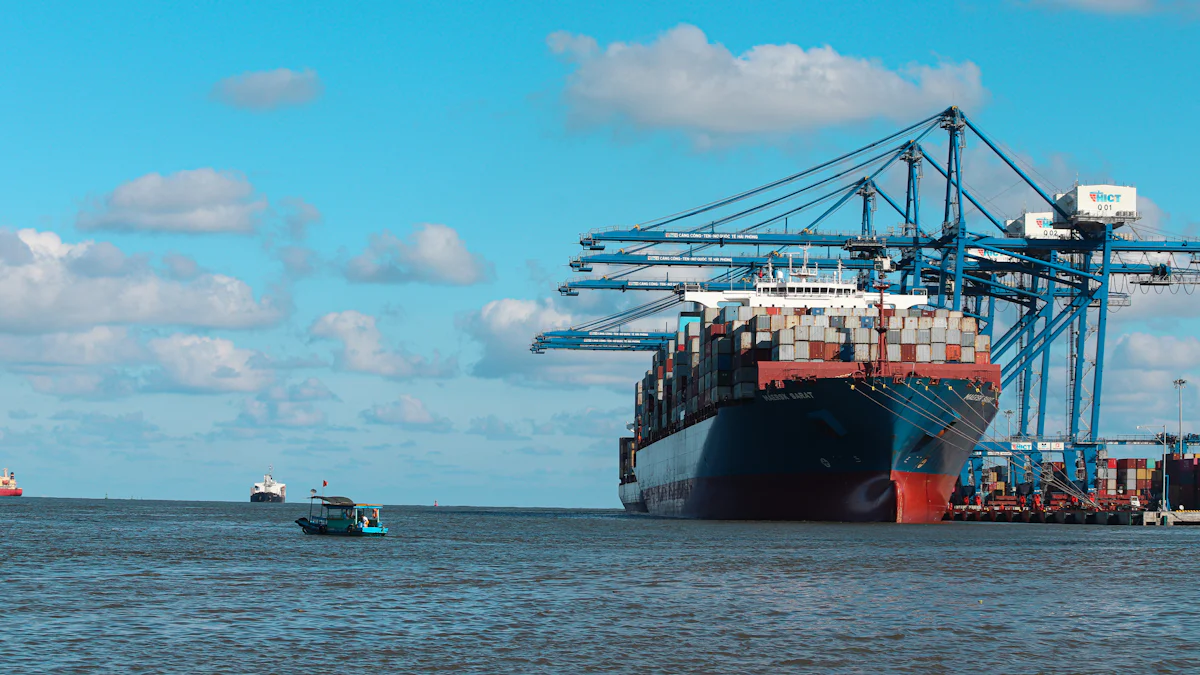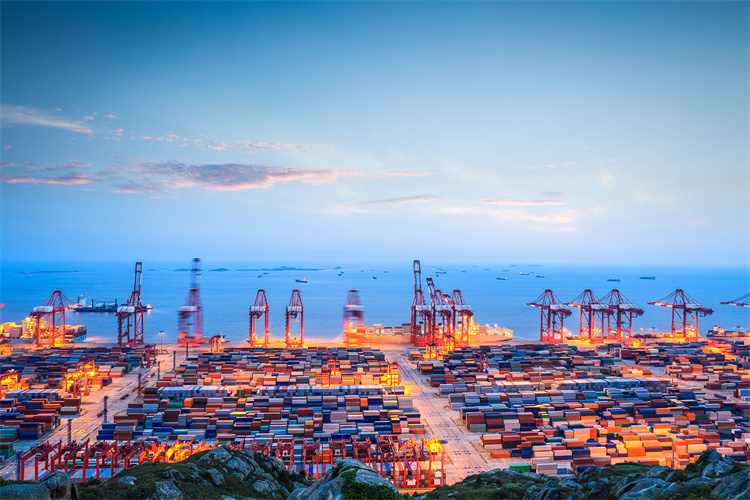A monthly roundup of logistics industry news

Staying updated with logistics industry news holds immense importance. The logistics sector constantly evolves, driven by global economic and technological advancements. A monthly roundup provides insights into key trends and developments. Automation and real-time tracking have become focal points for efficient supply chain management. The growth rate of global transportation and logistics output is predicted to decelerate to 3.8% in 2024. This highlights the need for strategic adaptation. Understanding these dynamics helps businesses navigate challenges and seize opportunities in a rapidly changing landscape.
Monthly Roundup: Supply Chain News
Innovations in Supply Chain Technology
Latest advancements in automation
The logistics industry is witnessing significant advancements in automation. Companies are increasingly adopting autonomous vehicles and drones to enhance delivery efficiency. These technologies reduce human error and improve speed. Automated warehouses now utilize robots for sorting and packing goods. This innovation optimizes space and minimizes labor costs. The integration of Internet of Things (IoT) devices allows real-time monitoring of inventory levels. This ensures timely restocking and reduces waste.
Impact of AI and machine learning
Artificial Intelligence (AI) and machine learning are transforming supply chain management. A leading logistics firm recently implemented an AI-driven system. This resulted in a 20% reduction in delivery times and a 15% decrease in operational costs. AI algorithms analyze vast amounts of data to predict demand patterns. This helps companies manage resources more efficiently. Machine learning enhances decision-making by identifying trends and anomalies. Blockchain technology also plays a crucial role. It provides transparent and secure transaction records, reducing fraud risk.
Supply Chain Disruptions
Effects of global events
Global events significantly impact supply chains. Geopolitical tensions often lead to disruptions in trade routes. Natural disasters can halt production and delay shipments. The COVID-19 pandemic highlighted vulnerabilities in supply chains. Many industries faced shortages due to factory closures and transportation restrictions. High demand for certain electronic components further strained supply chains. Companies must remain vigilant and adaptable to navigate these challenges.
Strategies for mitigation
Effective strategies are essential to mitigate supply chain disruptions. Diversifying suppliers reduces dependency on a single source. This approach minimizes risks associated with geopolitical issues. Implementing robust contingency plans ensures business continuity during crises. Companies should invest in technology to enhance visibility across the supply chain. Real-time tracking systems provide valuable insights into potential bottlenecks. Collaboration with stakeholders fosters resilience and trust. Emphasizing sustainability and environmental initiatives ensures long-term industry health.
Monthly Roundup: Transportation and Shipping Updates

Maritime Shipping Developments
Changes in shipping regulations
Maritime shipping regulations have undergone significant changes. Authorities have introduced stricter environmental standards. These standards aim to reduce emissions from ships. Compliance with these regulations requires investment in cleaner technologies. Shipping companies must adapt to these changes to avoid penalties. The global transportation and logistics output growth is predicted to decelerate to 3.8% in 2024. This slowdown results from a subdued US economic performance and a slowdown in China. Worldwide monetary policy tightening also contributes to this trend.
New shipping routes and partnerships
New shipping routes and partnerships are emerging in the maritime industry. Companies are exploring alternative routes to optimize efficiency. These routes help bypass congested areas and reduce transit times. Strategic partnerships enhance collaboration among shipping companies. These alliances improve resource sharing and cost-effectiveness. Volatility in container shipping is gradually easing. Narrowing price differentials contribute to this stabilization. Sea freight remains a cost-effective option due to its economies of scale.
Air Freight Trends
Growth in air cargo demand
Air cargo demand has experienced robust growth. June witnessed a 14% increase in demand. International operations surged by 16%. The UAE's air freight market is expanding. A compound annual growth rate (CAGR) of 4.8% is forecasted for the 2017-2021 period. Air freight offers faster delivery times compared to sea freight. This mode of transport is crucial for time-sensitive shipments. The logistics industry faces a shortage of essential resources. Skilled labor, equipment, and technology are in high demand.
Innovations in air freight technology
Innovations in air freight technology are transforming the industry. Advanced tracking systems provide real-time updates on shipments. These systems enhance transparency and customer satisfaction. Automation plays a vital role in streamlining operations. Automated sorting and handling systems reduce human intervention. This technology improves efficiency and accuracy. Air freight technology continues to evolve. Companies invest in research and development to stay competitive. The logistics industry embraces digital transformation for operational flexibility.
JUSDA's Role in Regulatory and Policy Changes
New Legislation Impacting Logistics
Environmental regulations
Environmental regulations have become a focal point for the logistics industry. Governments worldwide have introduced stricter standards to reduce carbon emissions from transportation. The Review of Maritime Transport 2023 emphasizes the need for decarbonizing maritime transport. This initiative aims to ensure a just transition while addressing regulatory uncertainty. Companies must invest in cleaner technologies to comply with these regulations. Failure to adapt could result in significant penalties and reputational damage.
Trade agreements and tariffs
Trade agreements and tariffs significantly influence logistics operations. Recent changes in trade policies have reshaped global supply chains. New agreements aim to facilitate smoother trade between countries. These agreements often include clauses that impact tariffs on goods. Logistics companies must stay informed about these changes to optimize their operations. Understanding the implications of trade agreements helps businesses navigate international markets effectively.
Compliance and Safety Standards
Updates in safety protocols
Safety protocols in logistics have undergone updates to enhance operational security. Authorities have introduced new guidelines to ensure the safety of goods and personnel. These protocols focus on minimizing risks during transportation and storage. Companies must implement these guidelines to maintain compliance. Regular training sessions for employees help reinforce safety measures. Adherence to updated safety protocols ensures smooth and secure logistics operations.
Compliance challenges for logistics companies
Logistics companies face numerous compliance challenges. Navigating complex regulations requires significant resources and expertise. Companies must monitor changes in legislation to avoid potential pitfalls. Compliance with environmental and safety standards often demands substantial investments. Businesses must allocate resources efficiently to meet these requirements. Collaboration with regulatory bodies can provide valuable insights and support. Overcoming compliance challenges strengthens a company's reputation and operational efficiency.

JUSDA Solutions
To provide you with professional solutions and quotations.
The monthly roundup highlighted key developments in logistics, including advancements in automation and AI, changes in shipping regulations, and evolving compliance standards. Staying informed in the logistics industry is crucial for businesses to optimize operations and enhance customer satisfaction. Real-time tracking features ensure responsive supply chain systems. Shipment tracking empowers businesses to operate efficiently and maintain high service levels. Readers are encouraged to engage with the content and share insights. Understanding these dynamics will help navigate challenges and seize opportunities in a rapidly changing landscape.
See Also
Revealing the Hidden Power: AI in Logistics Explored
Discovering Ocean Freight Logistics: Latest in 2024
The Importance of Joining Premier Logistics Webinars
